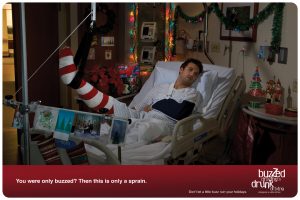Holiday Season Buzzed Driving Is Drunk Driving

This holiday season, 2Pass Defensive Driving School is partnering with the U.S. Department of Transportation’s National Highway Traffic Safety Administration (NHTSA) for the national Buzzed Driving Is Drunk Driving awareness campaign to help keep impaired drivers off the road. The campaign runs from November 29 through December 10, 2019. While the end of the year brings about the merriment of the holiday season, we want to make sure Americans are safe on the roads, traveling to and from parties and vacation destinations. This holiday season, remember: Buzzed Driving Is Drunk Driving. If you plan to go out and include alcohol in your celebration, make sure you refrain from driving. Review these facts and spread the word about the dangers of drunk driving.
Buzzed Driving: The Sobering Statistics
- According to NHTSA, 885 people lost their lives in traffic crashes involving a drunk driver during the month of December 2017.
- During the Christmas (6 p.m. Dec. 22, 2017, to 5:59 a.m. Dec. 26, 2017) and New Year’s Day (6 p.m. Dec. 30, 2016, to 5:59 a.m. Jan. 3, 2017) holiday periods in 2017 alone, we saw more drunk-driving-related fatalities (267) than during any other holiday period that year.
- Approximately one-third of all traffic crash fatalities in the United States involve drunk drivers (with blood alcohol concentrations [BACs] of .08 or higher). In 2017, there were 10,874 people killed in drunk-driving crashes. To put it in perspective, that’s equal to about 20 jumbo jets crashing, with no survivors.
- It is illegal to drive with a BAC of .08 or higher in 49 states and the District of Columbia — no exceptions. In Utah, the limit is .05 BAC.
- Of the traffic fatalities in 2017 among children 14 and younger, 19% occurred in alcohol-impaired-driving crashes.
- Despite the fact that it’s illegal to drive when impaired by alcohol, in 2017, one person was killed every 48 minutes by a drunk driver on our nation’s roads.
- Men are more likely than women to be driving drunk in fatal crashes. In 2017, 21% of males that were involved in fatal crashes were drunk, compared to 14% of females.
- In 2017, motorcycle riders involved (killed and survived) in fatal crashes had higher percentages of alcohol impairment than any other type of motor vehicle driver (27% for motorcycle riders, 21% for passenger cars, 20% for light-truck drivers, and 3% for drivers of large trucks).
